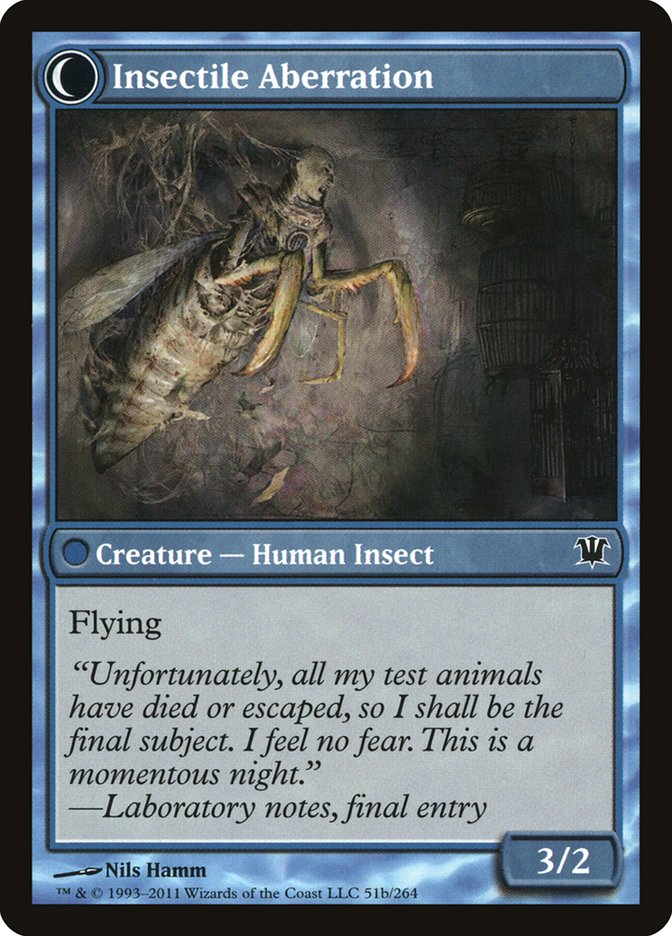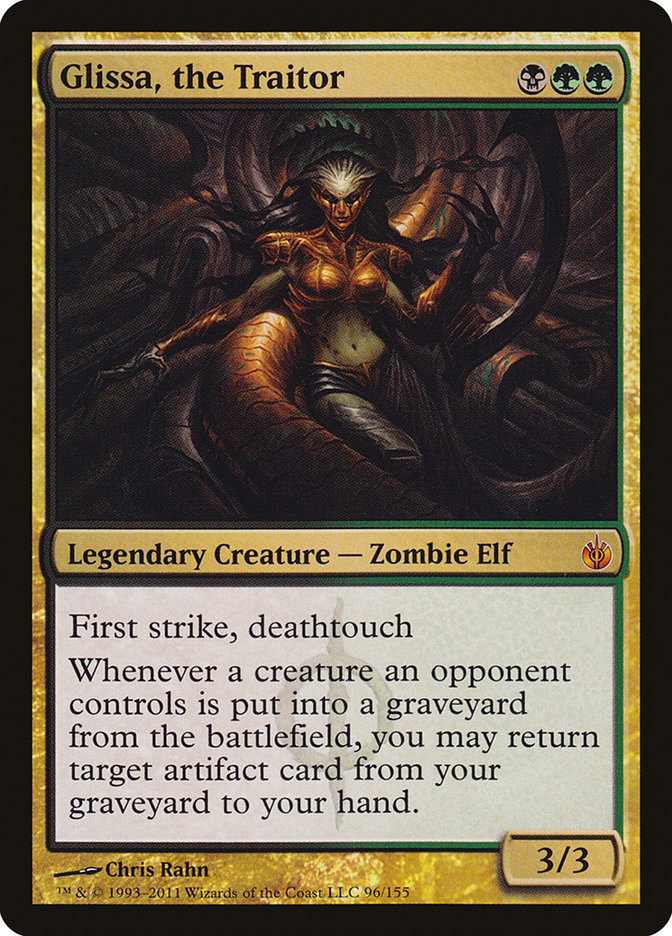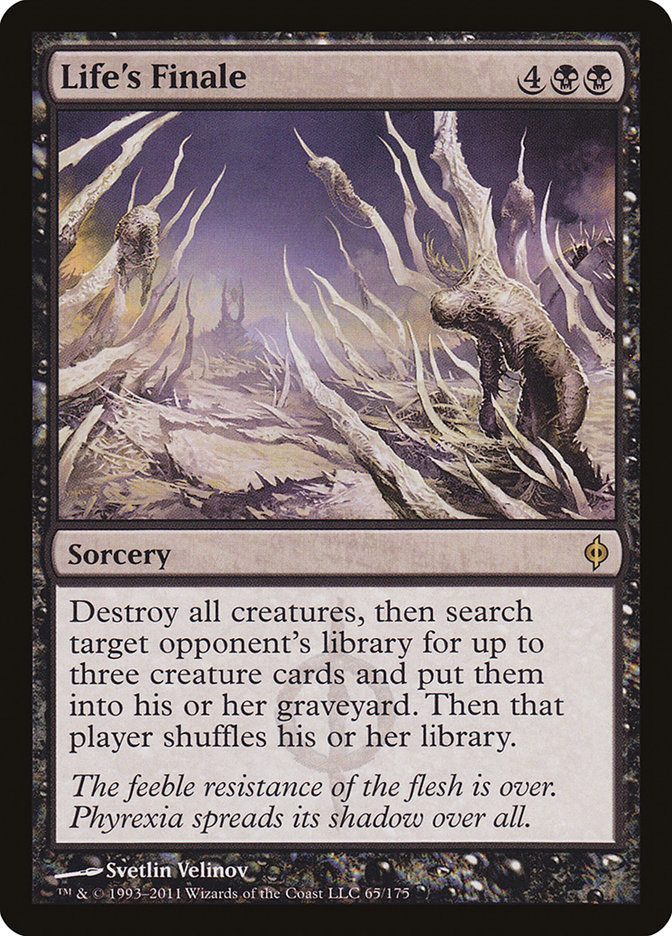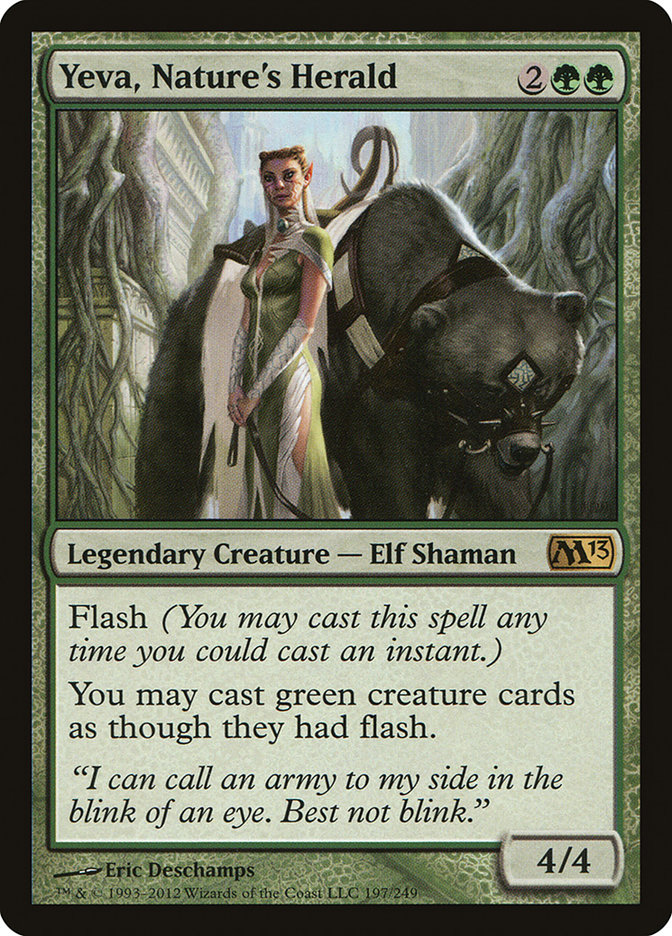Like many today, I cut my Magic tournament teeth grinding the SCG Tour. Unlike many, though, I have largely done so while marching to the beat of my own drum. Simply winning while playing Magic is not the most fun for me. I derive the most enjoyment from Magic when I am finding interesting combinations of cards that others have left unexplored.
I have been playing large Magic events for the better part of five years now. While my brewing has left me with more than my fair share of failures, it has also given me a number of success stories in formats people claimed to otherwise be stagnant. Today I would like to take a look at some of my more successful brews over the years and examine what made them tick and why they were successful. Remember that learning from our past is an important part of having a fruitful future.
Glissa Control: A Level 2 Deck
This first deck is near and dear to my heart. It is the first deck I ever made Top 8 of an Open with. I present to you the mess that was Glissa Control:
Creatures (8)
Planeswalkers (5)
Lands (25)
Spells (22)

At its core, this was a controlling deck that was built to leverage the card advantage and powerful combat abilities that Glissa, the Traitor provided. When building a deck it is often reasonable to start with a single powerful card as your centerpiece.
For those of you who were not around during Standard in early 2012, it was a format that had the dominating presence of U/W Delver. This deck featured cards that are not even legal in Modern today, such as Ponder, Gitaxian Probe, and Mental Misstep. Looking at the decklist above, I am sure some of you are wondering how on earth it could keep up with a deck like Delver.
The short answer was that it could not. At least, not most of the time. What Glissa Control could beat, however, were the W/B Tokens deck and creature decks like Naya Pod. Against W/B Tokens, we had copies of Ratchet Bomb in our maindeck, backed up by the deck’s namesake Glissa, the Traitor to buy our Bombs back over and over again.
Against Naya Pod, we simply had a pile of removal and four creatures with first strike and deathtouch they could not attack into. We also had this gem in our sideboard.
It may seem like a clunky sweeper at first glance, but if you think about Life’s Finale’s “extra” text in the context of Birthing Pod, it is quite good. In the mid-to late-game, you could often take out an entire link on the Pod chain by taking all of your opponent’s remaining four- or five-cost creatures away.
This made the Glissa Control deck a “Level 2” deck for the Standard format: Glissa Control was built to prey on the decks that were trying to prey on the best deck. During the course of this Open, I played against W/B Tokens and Naya Pod for seven of my nine Swiss rounds. While I ended up losing in the quarterfinals to a Reanimator deck, I was fairly happy with my deck and card choices at this event.
Takeaway: Having the best deck for a given tournament does not require the ability to beat every deck in a given format…or even the ability to beat the best deck in that format.
Temur Flash: Fighting on a Different Axis
Fast forward a year to Innistrad / Return to Ravnica Standard. The format is littered with green midrange decks featuring Thragtusk, U/W Control decks leaning on the power of Supreme Verdict and Sphinx’s Revelation, and Aristocrats decks leaning on Blood Artist.
While many of those things were sweet in their own right, this was the season I learned to love playing on my opponent’s turn. Much like my success before this one, my deckbuilding centered around a legendary green creature:
Yeva not only gave our other green creatures flash, but she had flash herself. This made her extremely flexible. Against aggressive decks, she was a surprise 4/4 blocker inside combat. Against midrange decks she allowed you to pass the turn with countermagic up while still using your mana if they chose not to play into your Syncopate. Against control decks, she allowed you to do things in response to their big plays like tapping out for Sphinx’s Revelation.
Yeva ended up being the star of a Temur Shell I piloted to a Top 4 and multiple Top 32 finishes at Standard Opens in early 2013:
Creatures (15)
Lands (25)
Spells (20)
Sideboard

Outside of the four copies of Mizzium Mortars, this deck essentially never played on its own turn. Yeva not only gave our copies of Huntmaster of the Fells Flash, but all of our instant-speed cards allowed us to almost always pass our turn, flipping the Huntmaster. Then, thanks to cards like Think Twice and Snapcaster Mage we were often able to flip Huntmaster back right away, generating a lot of health, damage, and Wolves.
While the Temur Flash deck was doing some worthwhile things, if you look at the cards the other decks this Standard season were playing, there is no denying that the Flash deck was playing objectively weaker cards. How was I winning games with it, then? Simple: the Temur Flash deck was attacking on a different axis from what most of the people were used to.
Even once people realized they needed to stop running their 2/2s into my open Yeva mana, the play patterns the Temur Flash deck executed were foreign to many players. Even experienced players often had a hard time reading what was going on in a given game. Unlike many decks that obviously had countermagic represented when passing the turn without spending mana, Temur Flash could be representing countermagic, removal, or a threat.
To this day, the Temur Flash deck retains my highest win rate with any Constructed deck in sanctioned matches over a reasonable sample size. I won right around 75% of my matches played with this deck in just under 100 sanctioned matches.
Takeaway: You do not always have to be playing the objectively best cards. Playing things people have less practice against often provides a strategical advantage.
Mardu Aggro: Transformational Sideboards
Something that is often true in Magic is that aggressive decks are favored Game 1 while often being an underdog in the post-sideboard games. Their plan is generally to win their first game and then hope their opponent stumbles in one of the two post-sideboard games. This was especially true during Theros / Khans of Tarkir Standard, when cards like Drown in Sorrow, Arashin Cleric, and Pharika’s Cure all saw common play. Some of the more popular decks at the time were Abzan Control and Esper Dragons.
My favorite deck from this era was a Mardu Aggro deck that I ended up winning a Premier IQ with:
Creatures (15)
Lands (24)
Spells (21)

In the maindeck, we have some quality threats like Monastery Swiftspear and Goblin Rabblemaster. We back these up with removal that doubles as reach, such as Crackling Doom, Lighting Strike, and Stoke the Flames.
The interesting thing about this deck was its sideboard plan. Instead of trying to fight through all of the anti-aggressive cards your opponent was bound to sideboard in, we simply turned into a control deck that was able to play over the top of the more efficient cards our opponents had. Instead of Monastery Swiftspear, we had Elspeth, Sun’s Champion. Instead of Goblin Rabblemaster, we had Thoughtseize. Instead of Seeker of the Way, we had End Hostilities.
Countless times while playing this deck in post-sideboard games, you could see your opponent slump into their chair as they spent a card like Pharika’s Cure on an Elspeth Soldier token. That being said, this was definitely the style of deck that was less good once your opponents knew what was coming from the sideboard. So if you find a good transformational deck, be sure to save it for that big event you really need to win.
Takeaway: The best Game 1 deck is not always the best post-sideboard deck. Building the right sideboard is just as important as having a good maindeck.
Abzan Seasons Past: Play More Lands
Magic players seem to be fairly greedy as a collective. One of the things I almost always do when working on a decklist I have been given from someone else is add at least one land. In my experience, you are going to lose far more games to not having enough resources than to having too many, especially in midrange and control decks.
Some formats are more forgiving than others when it comes to stumbling. Standard when Magic Origins was last legal and you could play a deck with 21 one-drops was not one of these formats. That is why one of the first things I did when I started working on Abzan Control during this time was add a 27th land to the mana-hungry archetype:
Creatures (6)
Planeswalkers (3)
Lands (27)
Spells (24)

The most worrying part about playing additional resources is flooding out or drawing too many lands. Thankfully Wizards knows this and makes sure we almost always have some sort of utility lands to make flooding out less painful. In this particular Standard format, we have access to a variety of creature-lands, which we leverage eight copies of in this Abzan list. Thanks to Sylvan Advocate, these creature-lands pack a real punch when you make it to the late-game.
Takeaway: When in doubt, play an extra resource. Utility and creature-lands go a long way to make screw happen less often and flood less painful.
Wrapping Up
Deckbuilding is a deep topic, so deep there is literally a book about it. My goal today was to share some tidbits about deckbuilding strategies I have picked up over the years while also sharing some of my favorite decks of all time.
If you take anything away from this piece, make it the following points:
- Starting with a “build-around” card that is individually powerful is generally a good idea.
- Having the best deck for a given tournament does not require the ability to beat every deck in a given format, or even the ability to beat the best deck in that format.
- You do not always have to be playing the objectively best cards. Playing things people have less practice against often provides a strategical advantage.
- The best Game 1 deck is not always the best post-sideboard deck.
- Building the right sideboard is just as important as having a good maindeck.
- When in doubt, play an extra resource. Utility and creature-lands go a long way to make screw happen less often and flood less painful.
What are some of your favorite decks of all time? What are some interesting or unique things those decks did to make themselves powerful? Let me know in a comment below!









